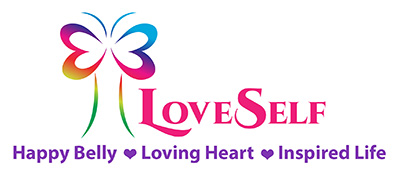What does it mean to be gluten free? Why is it important to you or your family?
Flour??? “Isn’t that the benign and favorite white stuff that is in all my food?” Well… it turns out for many people flour can have quite a challenging affect on their health.
So, what is it about our favorite bread or pizza crust that may be causing issues? It is the gluten. Gluten is a protein found in wheat, rye, barley, spelt, and kamut. Additionally, it can be found in hidden sources such as malt, soy sauce, many alcohols, beer, and brewers yeast (to name a few).
Think of gluten as the reason your dough gets ‘doughy’. Imagine throwing a pizza crust in the air or picture your favorite bread growing tall in the oven. Gluten, when combined with yeast, is what makes your bread rise. The pull and stretch of the thrown pizza dough is the gluten found in the flour.
More and more studies are beginning to show that a significant percentage of the population may have sensitivity to today’s wheat. Health challenges from gluten can range from sensitivity (meaning your body just feels better if you don’t eat it) to an autoimmune disease called celiac and a wide spectrum in between. Naming just a few on the long list of possible symptoms include immune reduction, digestive issues, abdominal cramping, stool issues, skin disorders, joint pain, and fatigue. The symptoms often vary from person to person.
Gluten allergies are likely becoming more commonplace due to the modification of the modern wheat plant and an earth and body damaging chemical herbicide called glyphosate sprayed in copious amounts on the wheat plant. In the interest of keeping your attention and not writing the equivalent of a dissertation, we are keeping this information to the highest level. So, please do your research, ask your natural health practitioner and make the decisions that are best for you.
Starting with the basics: What flours are gluten free?
Our personal favorites are almond flour, buckwheat, teff, millet, and coconut flour. Additional gluten free flours are potato starch, corn flours, tapioca flour, sorghum, amaranth, and bean flours. It is worth noting that just because a type of flour is gluten free doesn’t mean it is nutritious. At LoveSelf we understand this and spend countless loving hours making sure your decadent food desires are also the healthiest options.
Almond Flour or Almond Meal – Think Paleo! The difference between meal and flour is simple. The meal contains the skin of the almond. The flour does not. We use almond meal when desiring a heartier result, such as a breakfast muffin or raw treat. Almond flour and meal are full of protein and contains all the benefits of whole almonds. A couple of tips to make baking with almond flour easy. Lower your oven temperature. We never go over 350 degrees when baking with almonds. Add more eggs for soft airy height! If you are vegan, message us and we can suggest alternatives to eggs.
Buckwheat – Buckwheat is not actually wheat. Tricky name! Would you believe it is a fruit seed?! Buckwheat is high in protein, fiber, and full of nutrients. Not sure how to incorporate buckwheat into your gluten free recipes? We love buckwheat pancakes and crepes. Just replace ¾ of your gluten free flour blend with buckwheat flour for an earthy nutritious breakfast.
Millet Flour – Millet flour contains significant vitamins and minerals including high amounts of vitamin B and magnesium. Millet acts as a pre-biotic to aid in digestion and may even increase your serotonin levels. High in protein, millet has a great result in many bread recipes and can often be substituted one to one in your favorite gluten free cookie or muffin recipes.
Teff Flour – We discovered Teff and immediately fell in love. Teff is native to Ethiopia and is a staple in our favorite injera. Teff is one of those super foods; high in protein, calcium, and nutrient with a low glycemic index. It is easy to include in recipes and super tasty. How about this for a great recipe suggestion? Replace Teff with your usual flour in the family peanutbutter cookie recipe. You just amped up dessert and made your kids and your body happy.
Coconut Flour – We saved a personal favorite for last! For all the health benefits of coconut flour, click here. Coconut flour when combined with raw honey makes fabulous cookies. Coconut is also great in raw treat creation. One important reminder with coconut flour. It is absorbs liquid quickly. In other words, a little goes a long way. When baking with coconut flour replace no more than ¼ of your usual flours with coconut flour.
We love to bake with our favorite flours. For recipes check out our recipe page or sign up for our newsletter to join the secret recipe club!







